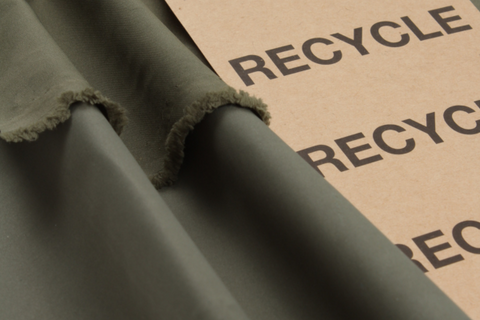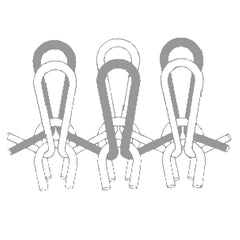
Sustainable and Eco-Friendly Fabrics for Sportswear and Activewear: Enhancing Performance and Protecting the Environment
As fashion designers and brand owners, choosing the right fabrics for sportswear and activewear is crucial to ensuring optimal performance, comfort, and durability. In today's world, where sustainability is a growing concern, incorporating eco-friendly materials into your designs not only benefits the environment but also aligns with the preferences of conscious consumers. In this article, we will explore some sustainable fabric options for sports apparel, discuss their characteristics, and explain the differences between jersey and interlock fabrics.

Sustainable and Eco-Friendly Fabric Options for Sports Apparel:
-
Recycled Polyester: Made from post-consumer plastic bottles, recycled polyester offers excellent moisture-wicking properties, durability, and breathability. It reduces dependence on virgin polyester production and contributes to waste reduction. Examples of recycled polyester fabrics include Repreve® and Seaqual®.
-
Recycled Polyamide: This material is derived from post-consumer waste, such as discarded fishing nets and other nylon products. By repurposing and recycling these materials, recycled polyamide helps reduce environmental pollution and waste. It has excellent moisture-wicking properties, ensuring that perspiration is quickly transported away from the body, keeping athletes dry and comfortable during intense workouts.
-
Organic Cotton: Grown without the use of harmful pesticides or synthetic fertilizers, organic cotton is soft, breathable, and hypoallergenic. It provides natural moisture absorption and allows the skin to breathe during physical activities. Fabrics such as Organic Cotton Jersey and Organic Cotton Interlock are great choices for eco-conscious sportswear.
-
Bamboo: Bamboo fabric is derived from a fast-growing, renewable resource. It offers natural anti-bacterial and moisture-wicking properties, keeping the wearer dry and comfortable. Bamboo blends well with other fibers and can be found in products like Bamboo Jersey and Bamboo Interlock.
-
Tencel® (Lyocell): Produced from sustainably sourced wood pulp, Tencel® is a biodegradable fabric with excellent moisture management and breathability. It regulates body temperature and inhibits the growth of bacteria, making it ideal for sports apparel. Tencel® Jersey and Tencel® Interlock fabrics are versatile options for activewear.
Characteristics of Sportswear Fabrics:
When selecting fabrics for sports apparel, consider the following essential characteristics:- Moisture Wicking: The fabric should effectively transport moisture away from the body, keeping the wearer dry and comfortable during physical activities.
- Breathability: Opt for fabrics that allow air circulation, preventing overheating and excessive sweating.
- Stretch and Flexibility: Sports fabrics should have adequate stretch to provide freedom of movement and flexibility during workouts or sports activities.
- Durability: Choose fabrics that can withstand frequent use, stretching, and washing without losing their shape or integrity.
- Quick Drying: Fabrics with quick-drying properties help manage moisture efficiently, ensuring comfort during and after workouts.

Differences between Jersey and Interlock Fabrics:
Jersey and interlock are common fabric choices for sportswear. Here's how they differ:- Jersey Fabric: Jersey is a lightweight, single-knit fabric known for its stretchability and breathability. It has a smooth face and a textured back and is often used for t-shirts, leggings, and base layers.

- Interlock Fabric: Interlock is a double-knit fabric with a more stable structure than jersey. It is thicker, smoother, and has better shape retention. Interlock fabrics are commonly used for sports bras, sweatshirts, and outerwear.

Discover our "Fabrics for Sportswear" Collection
By incorporating sustainable and eco-friendly fabrics into your sportswear and activewear designs, you not only cater to the growing demand for environmentally conscious products but also provide your customers with high-performance garments.
By making thoughtful fabric choices, you can create sportswear that meets both performance and sustainability standards, paving the way for a greener future.

